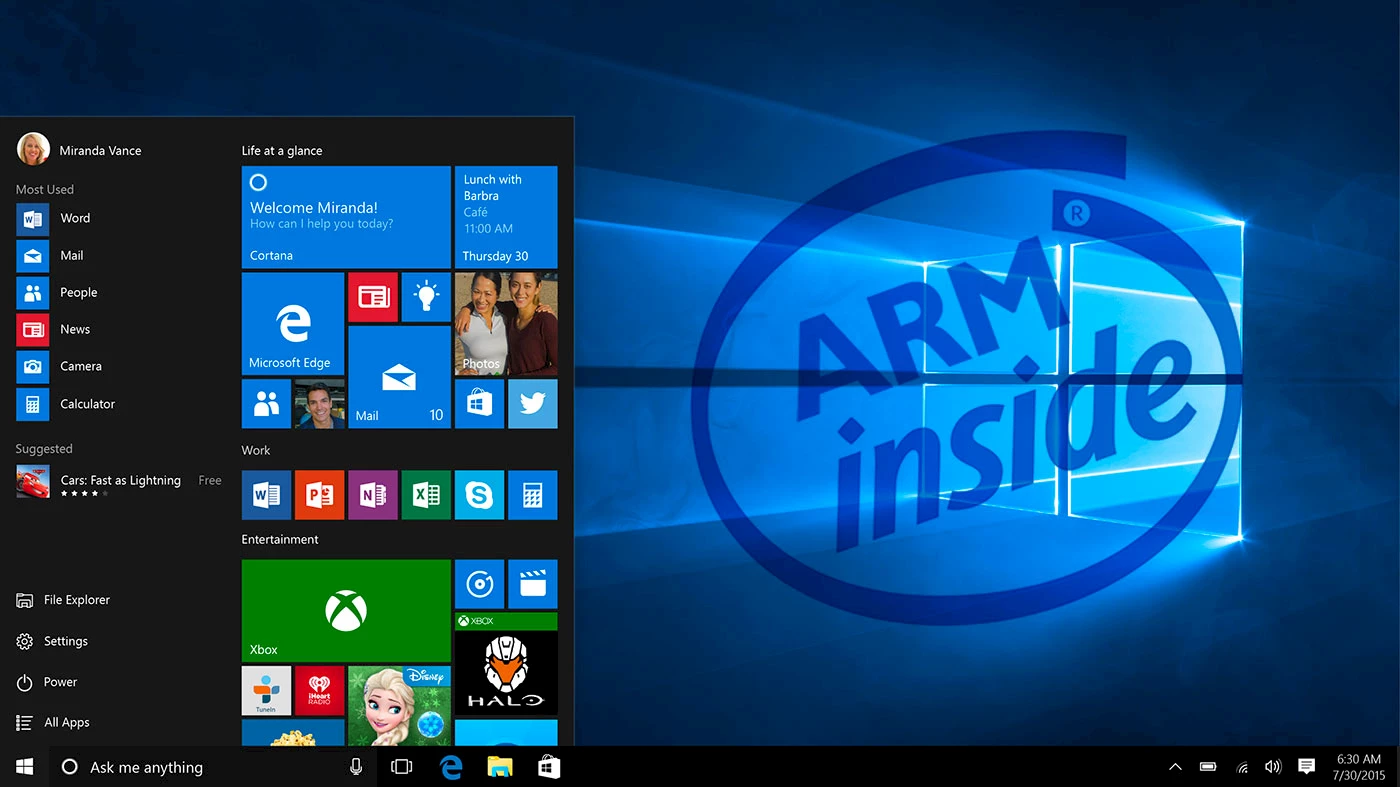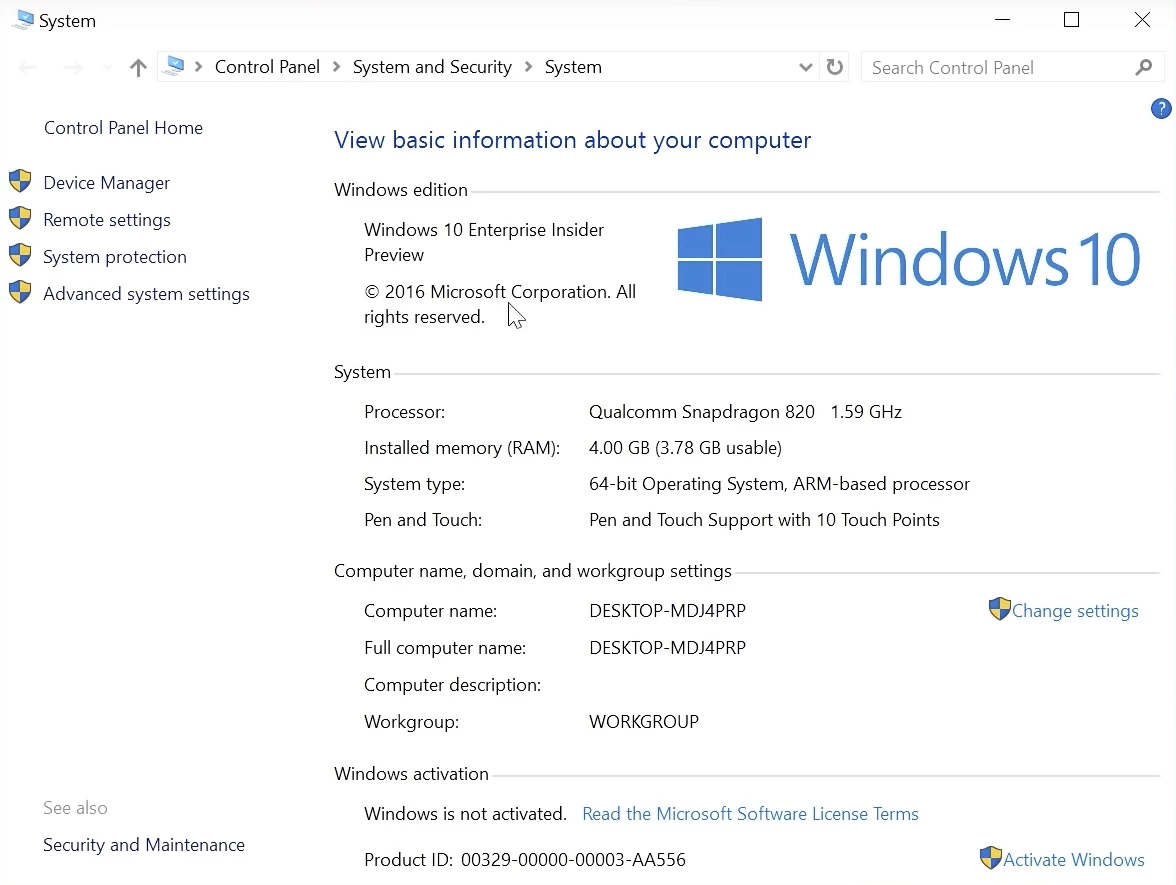The ARMing of Windows 10

It went unnoticed, yet it was probably the IT world’s biggest news of the year: Windows 10 is going to be compatible with ARM processors.Microsoft has had some experience with ARM processors (ARMv7), with a more tablet-specific operating system misleadingly called Windows RT, which came out in 2012 when Microsoft launched its first Surface tablet.
It went unnoticed, yet it was probably the IT world’s biggest news of the year: Windows 10 is going to be compatible with ARM processors.
Microsoft has had some experience with ARM processors (ARMv7), with a more tablet-specific operating system misleadingly called Windows RT, which came out in 2012 when Microsoft launched its first Surface tablet.
Unfortunately, Windows RT was an especially closed system plagued with limitations. It looked like the real Windows but wasn’t; for example, it couldn’t run available x86 applications. The system was a flop and it was abandoned in 2015. The Surface 3 tablet was launched in May 2015 with a Windows 8.1 system and an Intel Atom processor.
Now, Microsoft has decided to give ARM another try, and this time, it’s going big, with a true, no-compromise Windows system that is compatible with existing software. To achieve this, Microsoft has partnered up with ARM specialist Qualcomm. The first ARM Windows version will run on a Qualcomm Snapdragon 835, a ARMv8 10nm processor announced last November. The first ARM-equipped devices to hit the market will be laptops.
Portage is accomplished through an x86 instruction set emulator (about which Microsoft has released no details), supporting all 32-bit x86 applications, but not 64-bit ones. In concrete terms, users should notice no difference in behaviour between the Intel and ARM versions. The operating system itself is written and compiled for ARM. Applications that require a lot of processing power should, however, execute that much faster on Intel processors.

The greatest attraction for the public at large will be the proliferation of lighter, cheaper Windows 10 laptops with longer battery life and built-in cellular connectivity. These could be followed up by Windows 10 tablets, and maybe even “phablets” (phone+tablet) like a Surface Phone, and, who knows, entirely new devices.
Windows’ history has always been inextricably linked with Intel processors, going back to the days when MS-DOS was built for Intel 8086 and its successors. This is a major departure for Microsoft and a huge challenge for Intel, who has had trouble producing chips that are energy-efficient enough, or refreshing its offerings quickly enough for its clients. Evidently, Microsoft no longer places all its bets on its historic partner.
Apple is facing the same problem with Intel; ARM Macs are probably in the making with an instruction translator to run x86 applications, just like Rosetta enabled the transition from PowerPC to x86. We know that there are suggestions of a family of ARM Hurricane processors in the macOS Sierra kernel, and that all iOS devices already have ARM chips. It could be that the latest MacBook Pros will be the last Macs to run on Intel, which would explain the delay in updating the rest of the Macintosh family devices (iMac, Mac Pro, Mac Mini). Besides, as Apple said when it adopted Intel, the main benefit of the move was to enable compatibility with Windows, for example with Boot Camp. Now that Windows has switched to ARM, compatibility could be maintained if Mac also switched over.
To show how far ARM Windows has progressed, on December 7, Microsoft released a video showing Windows 10 running on the Qualcomm Snapdragon 820:
Though ARM chips are powerful enough for laptops and entry-level PCs, they have yet to prove their worth on more demanding machines like servers, where Intel still reigns supreme, with 99% of the market, according to IDC.
The other big news of the year is that last summer, Intel most pragmatically signed a contract to manufacture ARM processors under licence, in order to regain market share in the mobile sector, among other things. Stand by for ARM PCs marked “Intel Inside”.
Windows 10 ARM (Redstone 3) should be available in Fall 2017.
